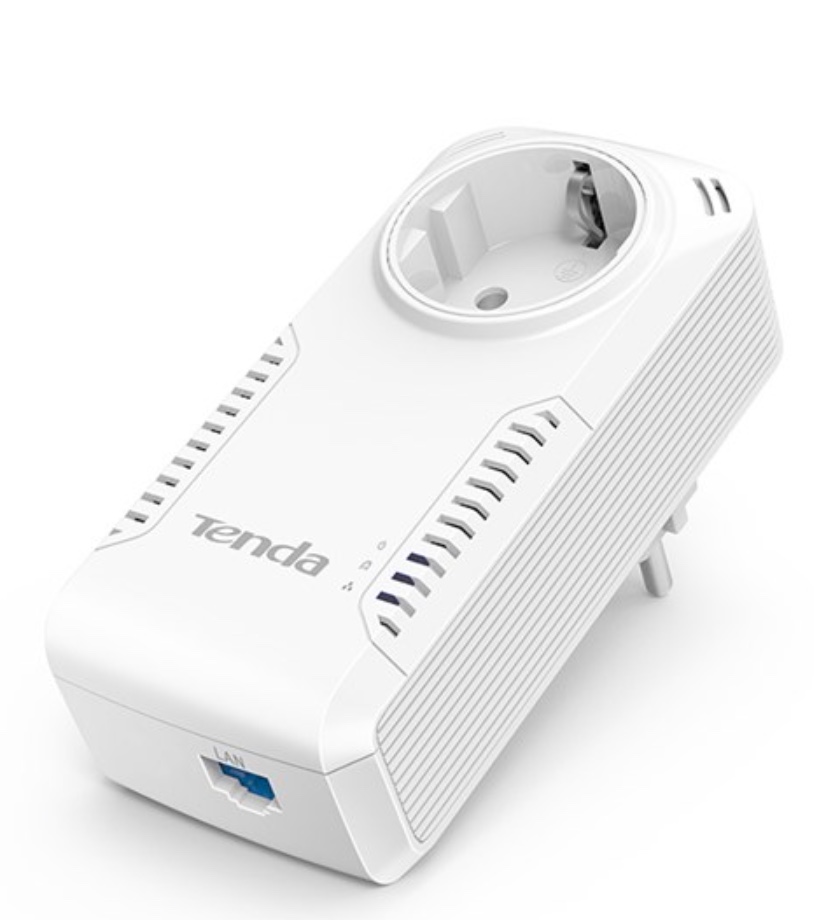Nothing beats a wired connection when you need (or simply want) a really fast network connection. That means either cutting into walls or usingPowerline Communication such as found in the Tenda AV1000 Gigabit Powerline Adapter.
Powerline Communication (PLC) is a communication technology that enables sending data over existing power cables. This means that, with just power cables running to an electronic device, for example, one can both power it up and at the same time control/retrieve data from it in a half-duplex manner.
With a Powerline network adapter kit, such as the Tenda AV1000 (about $60 for the Starter Kit), you buy a basic kit, which comes with two Powerline adapters and two Ethernet cables. You connect one of the Ethernet cables (mine is one from Comcast) to your router and to the first of the adapters. Then you plug it into the nearest power socket. You click the second Ethernet cable into the back of the HD TV and into the second adapter.

The Tenda AV1000 Gigabit Powerline Adapter, around $80, adopts the latest Broadcom chip to provide powerline transmission rates up to 1000Mbps, so it’s a good choice for building a multimedia entertainment network.
The system is plug and play, so all you have to do is connect it. As long as one port is connected to your router, you can access all the assets your network offers. Connect the second adapter, and you’ll have two more Ethernet ports in a different spot.
The adapters are white plastic boxes that measure about 2 x 1.5 x 5 inches. The AV1000 sports an AC plug and a pass-through jack on the opposite face. As mentioned, no configuration is needed.
The addition of a second Ethernet port is handy when you want to get a wired connection to, for example, a smart TV and a gaming console located near each other. The two adapter units can work when placed as far as 900 feet apart.
Tenda also made sure the devices are compatible with the latest AV2 HomePlug standards and are downwards compatible with 200M, 500M and 600M powerline products. This means it doesn’t matter if your other adapters are from Tenda, as long as they support the given standards.
Other convenient features include an automatic power-saving mode activated when no data transfer is detected and 128-bit AES encryption. There’s also QoS and IGMP support, which can optimize multiple media streams. In other words, when the AV1000 senses Netflix — something it does a lot at my house — it’ll make sure the stream is as fast as possible.
The AV1000 adapters are a little bulky. If you plug ’em into a top socket on an outlet, they’ll block the bottom socket. So might as well just put ‘em in the bottom socket.
Also, when the power goes out at our house, I have to unplug/plug both adapters back in.
Despite these niggling complaints, the Tenda AV1000 is reasonably priced, easy to install, and provides great throughput.
However, I do have to note that my AWT compadre, Steve Sande, could never get the two “ends” to talk to each other although they’re supposed to pair automatically. It might have something to do with having a lot of solar gear (inverters, etc.) on the outside of his power distribution.
Apple World Today Rating (out of 5 stars): ★★★★



